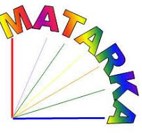Hungarian herbaria 16. Herbarium of the Georgikon Faculty (GK) in Keszthely
Abstract
This paper presents a brief description of the herbarium of the Georgikon Faculty of Pannon University in Keszthely (GK). The organized and accessible material of GK currently consists of more than 7200 specimens, which fill 48 shelves in four herbarium cabinets. The collections originate from 17 countries altogether, most of them, 6126 sheets from Hungary. The collection stores specimens from all of 19 Hungarian counties, but most of them were collected from counties around the Lake Balaton (Transdanubia). The number of species collected from Hungary exceeds 1550. The earliest specimens are from the 1890s. Ever since – though, with fluctuating intensity – growth of the collection is continuous. The number of collectors is nearly 300, including many students and teachers of the Georgikon Faculty, and collectors of various exsiccatae materials.
Data defciency is unusual on the attached labels: 95% of the sheets are accurately localizable at settlement level. Vouchers of several Hungarian floristic curiosities can be found in GK (e.g. Chenopodium multifdum L., Euphorbia dentata agg., Pinguicula alpina L., Shinnersia rivularis (A. Gray) R. M. King et H. Rob.).
References
Almádi L., Priszter Sz. 1965: A Chenopodium multifdum L. Magyarországon. Botanikai Közlemények 52(1): 19–21.
Bódis J., Dancza I., Gál L., Óvári M., Samu Z., Szalóky I. 2016: Almádi László 80 éves. Kitaibelia 21(1): 3–15. https://doi.org/10.17542/kit.21.3
Horváth F., Dobolyi Z. K., Morschhauser T., Lőkös L., Karas L., Szerdahelyi T. 1995: Flóra adatbázis 1.2. Taxon-lista és attribútum állomány. Flóra Munkacsoport MTA Ökológiai és Botanikai Kutatóintézete és MTM Növénytár, Vácrátót - Budapest, 252 pp.
Kapronczay K. 2013: Grynaeus Tamás (1931–2008). Orvostörténeti Közlemények 59(1–4): 226–227.
Király G. (szerk.) 2009: Új magyar füvészkönyv. Magyarország hajtásos növényei. Határozókulcsok. Aggteleki Nemzeti Park Igazgatóság, Jósvafő, 616 pp.
Nagy T., Takács A., Bódis J. 2016: Magyar herbáriumok 15. A keszthelyi Balatoni Múzeum herbáriuma (KBM). Botanikai Közlemények 103(2): 213–226. https://doi.org/10.17716/botkozlem.2016.103.2.213
Pinke Gy., Molnár Sz., Garamvölgyi V., Barina Z. 2012: Új gyomnövény Magyarországon a Dávid-kutyatej (Euphorbia davidii Subils). Növényvédelem 48(3): 117–120.
Purger D., Vajgand D., Mićić N., Vajgand K. 2015: Euphorbia davidii Subils (Euphorbiaceae), a new alien species in the flora of Serbia. Botanica Serbica 39(1): 49–52.
Szabó I. 2002a: A Hévízi-tó és lápi mellékvizeinek magasabbrendű növényzete. In: Ponyi J. (szerk.) 2002: A Hévízi forrástó ökológiai állapota. Hévízi Könyvtár 15., Hévíz, p. 34.
Szabó I. 2002b: Melegvízi növényfajok Hévíz és Keszthely vizeiben. Botanikai Közlemények 89(1–2): 105–115.
Szabó I. 2004: A tapolcai polgári iskola herbáriuma Redl Gusztávtól. Bakonyi Természettudományi Múzeum Közleményei 21: 33–71.
Szabó I., Almádi L. 1999: A növénytan és növényélettan története Keszthelyen. Georgikon Kiskönyvtár 6. Keszthely, 145 pp.
Thiers B. 2018: Index Herbariorum: A global directory of public herbaria and associated staff. New York Botanical Garden’s Virtual Herbarium. http://sweetgum.nybg.org/science/ih/


















